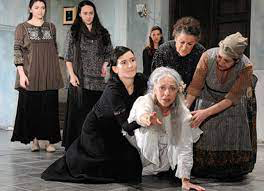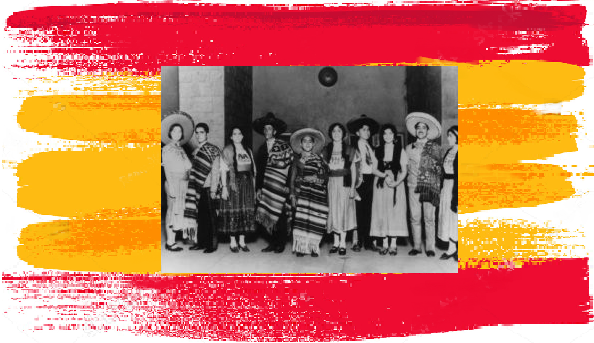BAS editor Helen Laurenson
As one of Spain’s greatest cultural exports, it comes as no surprise that the plays of Federico García Lorca have had a long and acclaimed relationship with the London stage. The compelling plots, universal themes and emotional truths at the heart of his rural trilogy, together with innovative staging and revitalised translations, have ensured repeated box-office success. The enduring themes of plays written almost one hundred years ago lend themselves to a constant re-shaping in an attempt to reflect the times in which they are performed, contributing to what translator Gwynne Edwards terms ‘the continuing challenge and durability of Lorca’s theatre’.
These works all feature the big five existential concerns: death, isolation, identity, freedom and meaning. There is also a clear political context, both historically with a capital ‘P’ and through the process of gender dynamics – what political scientist Christina Boswell calls ‘the who gets what, when and how’. It is this transposition to a different key at a different pitch wherein lies the directorial rub – how to revitalise a canonical text whose original script is much removed both linguistically and socio-historically from the audience of today. Commissioning a literal translation from the original into English is the first step of this process of transposition, followed by a re-working: such was the case with David Hare’s script for the 2005 National Theatre production of La casa de Bernarda Alba and Simon Stone’s adaptation of Yerma at the Young Vic in 2017.

The 2023/2024 National Theatre production of La casa de Bernarda Alba ran at the Lyttelton from 16 November to 6 January. What made it so memorable and innovative was the ingenious interplay between Alice Birch’s perfectly spliced and dovetailed script and the storylines occurring concurrently in Merle Hensel’s set – an imposing cross-section of the eponymous house which filled the Lyttelton stage.
A polyphonic script such as this, whilst drawing attention to the multiple, interior dramas of the female characters, does require either an exhaustive knowledge of the text or Herculean powers of focus (we can assume that ‘A’-level Spanish teachers and their pupils, in the main, possess the former). It should be added, too, that the multiple conversation approach is only sustained for the first half of the play, with a more traditional and focused approach assumed for the remainder.
The cross-section of the three floors of la casa, including kitchen, bedrooms and bathroom, was the perfect plastic representation of the theme of incarceration and its attendant motifs of walls (la pared features no less than eighteen times in the original text, alongside tapia and muro). The clever cross-sectioning of the house also draws the audience’s eye to aspects of privacy – Angustias in an intimate moment alone in her bed, María Josefa hiding under hers, and Amelia taking a bath. As Arifa Akbar of The Guardian writes, ‘it is a clever play on the notion of exposure, from domestic ‘peeping’ to greater political surveillance’.

Every recent production of La casa has selected and amplified a key aspect of the original text. Bijan Sheibani’s 2012 production at the Almeida, for example, transposed perfectly to the Middle East, resulting in what The Guardian called ‘an oppressively Iranian reconfiguring of Lorca’s Spain’. The National’s 2023/2024 production, directed by Rebecca Frecknell, was no different in this respect.
There are a couple of points to note, however, not least for the diehard lorcaphile. Whilst incarceration was foregrounded, the ‘Spanishness’ of the original was reduced to a mere footnote (the use of fans) and any specific cultural references were hard to glean, except through the characters’ names. In addition, the initial polyphonic nature of the adaptation reduced the dominance of Bernarda herself – maybe no bad thing – and her emblematic bastón was totally eschewed. However, this does raise the question of the central eponymous nature of the main character, along with her dictatorial character, a theme possibly even more relevant politically today. The presence of Pepe el Romano on stage and through the discourse of dance in a highly stylised sequence was a radical move, but successful.
Not exactly a Christmas pantomime, but thoroughly enjoyable.


